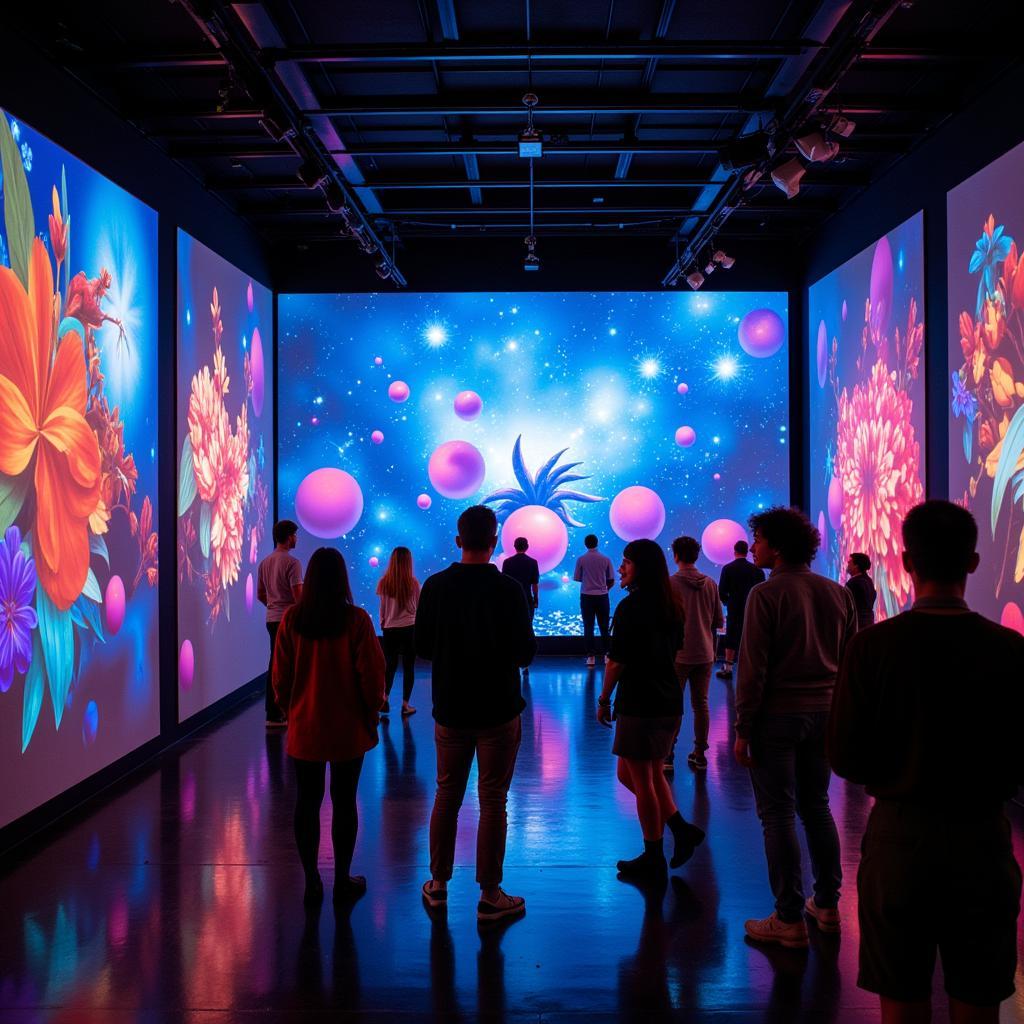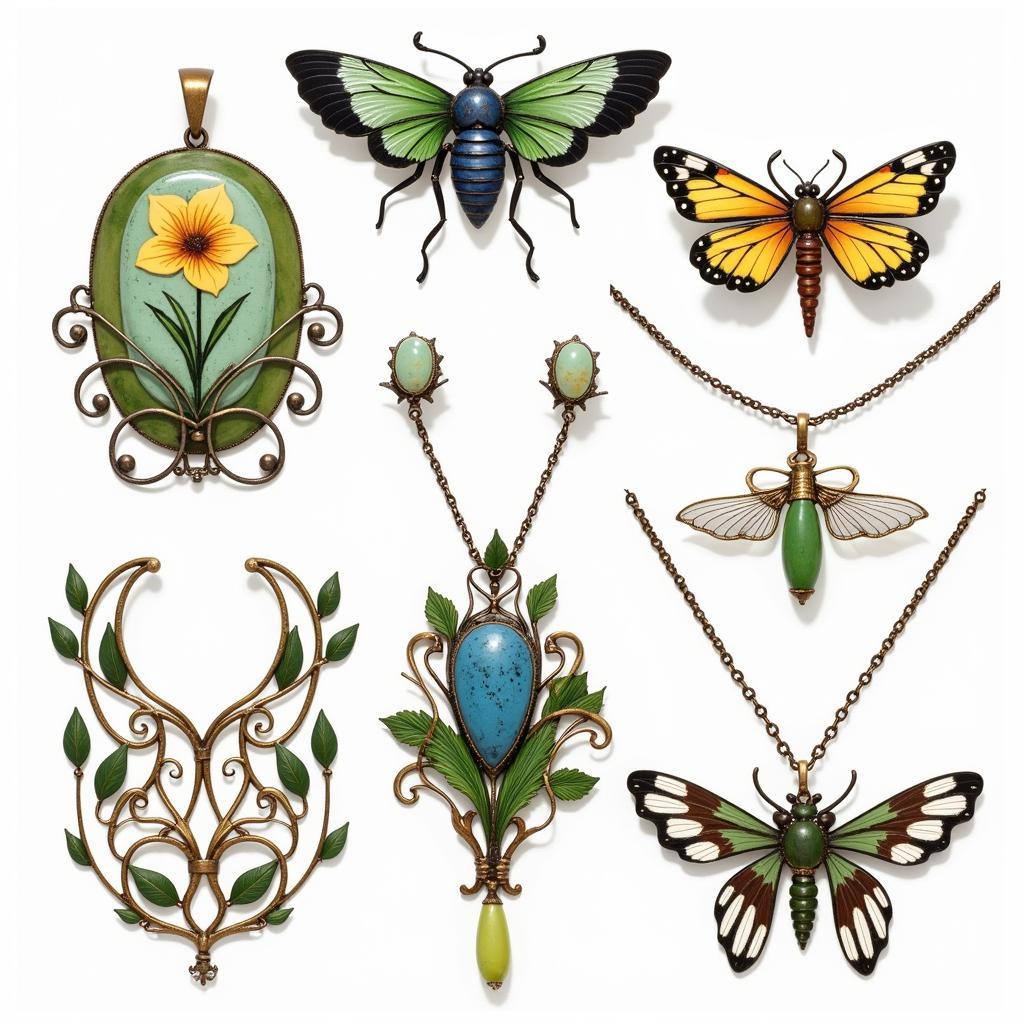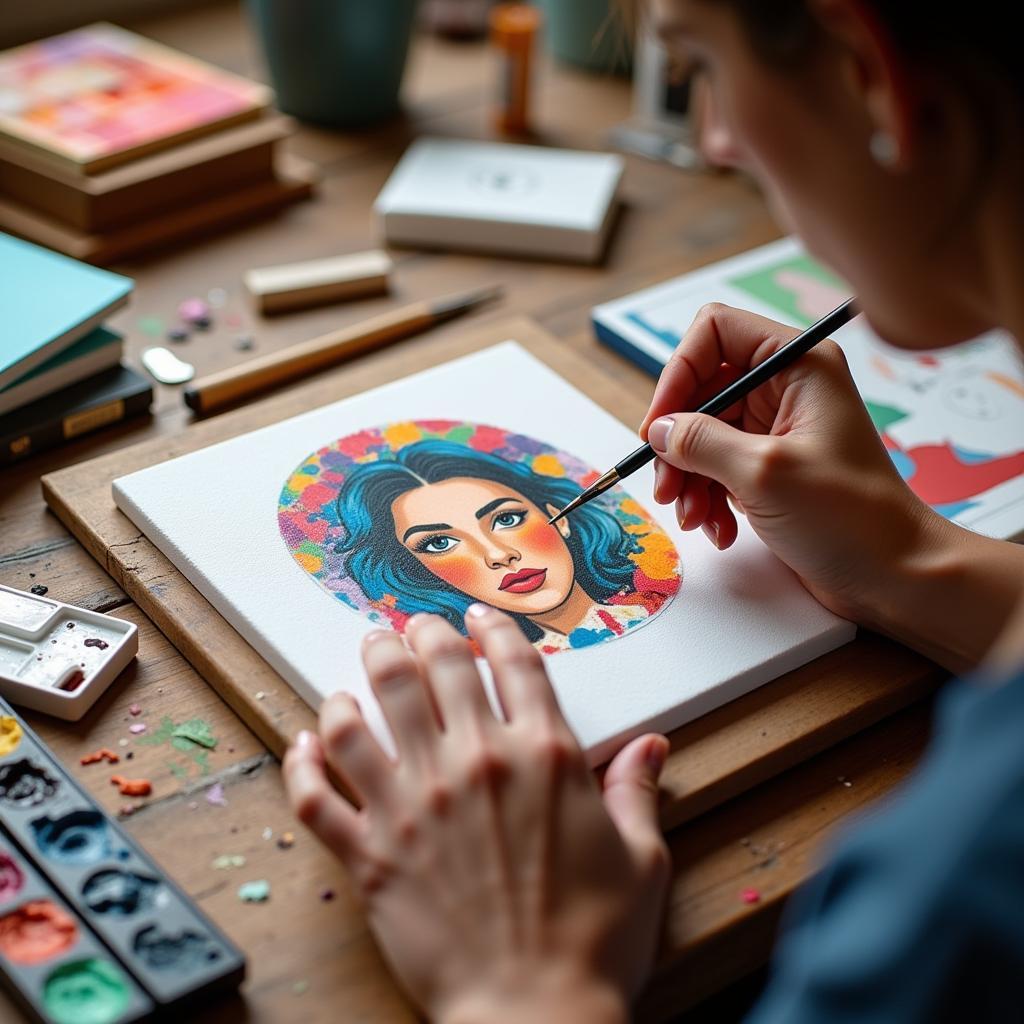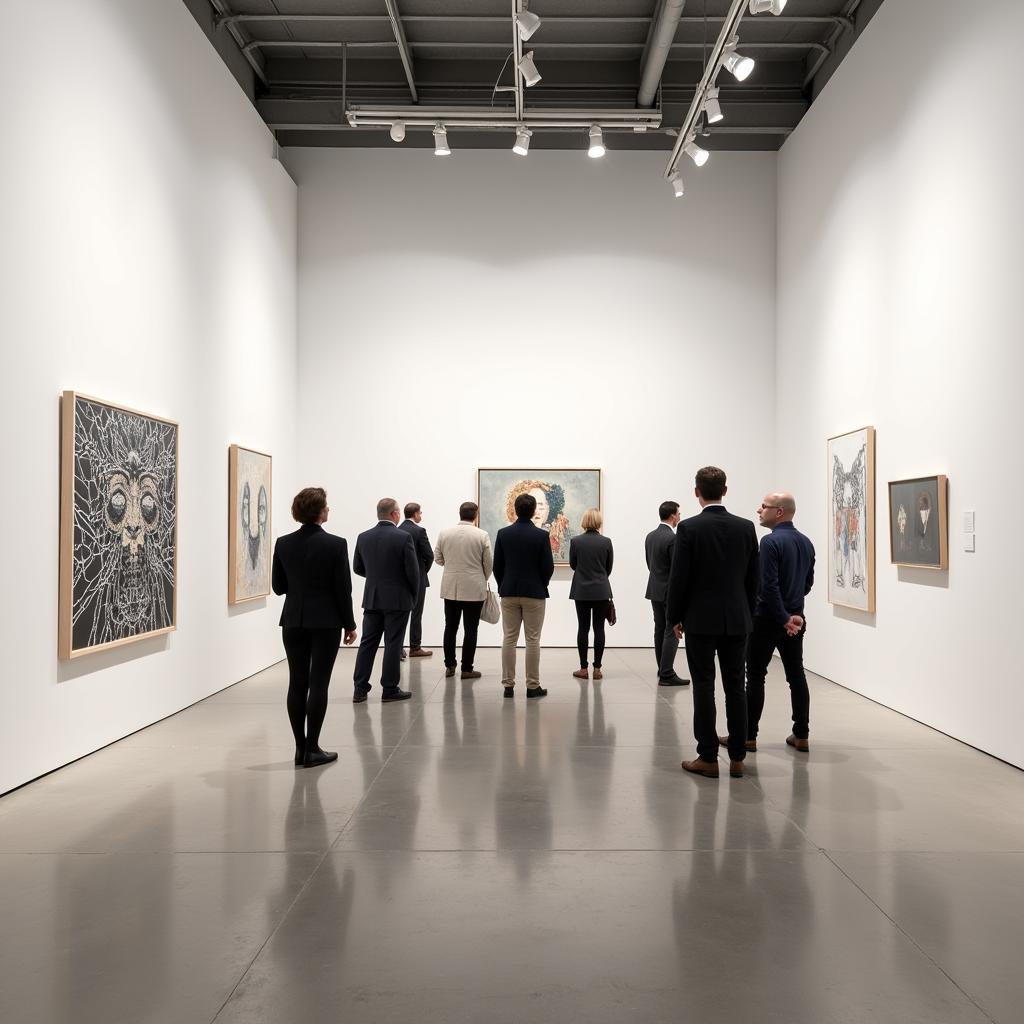Art Therapy Bridge Drawing: A Path to Self-Discovery
Art Therapy Bridge Drawing is a powerful tool for self-exploration and emotional expression. It allows individuals to visually represent their journey through life, highlighting transitions, challenges, and personal growth. Within the first few strokes of a pencil, you can begin to unlock hidden emotions and gain a deeper understanding of yourself. bridge drawing art therapy offers a unique approach to processing experiences and fostering healing.
Understanding the Power of Art Therapy Bridge Drawing
The bridge drawing acts as a metaphor for life’s journey. The starting point represents the past, the bridge itself symbolizes the present, and the destination signifies the future. Obstacles and supports along the way reflect challenges and resources. This simple yet profound exercise can be incredibly insightful, offering a visual representation of one’s internal landscape. What’s more, it’s accessible to everyone, regardless of artistic skill.
How Does Bridge Drawing Work in Art Therapy?
The process usually begins with a blank sheet of paper and simple drawing materials. Individuals are guided to visualize their life as a journey and represent it symbolically as a bridge. There’s no right or wrong way to approach the drawing; the focus is on personal expression and exploration. The therapist then facilitates a discussion about the drawing, helping the individual connect the visual elements to their emotional experiences and life narrative. This process can reveal hidden feelings, unresolved conflicts, and potential pathways for growth.
Imagine your life as a journey across a bridge. Where do you see yourself on that bridge? What does the landscape surrounding the bridge look like? These questions can spark a powerful process of self-discovery.
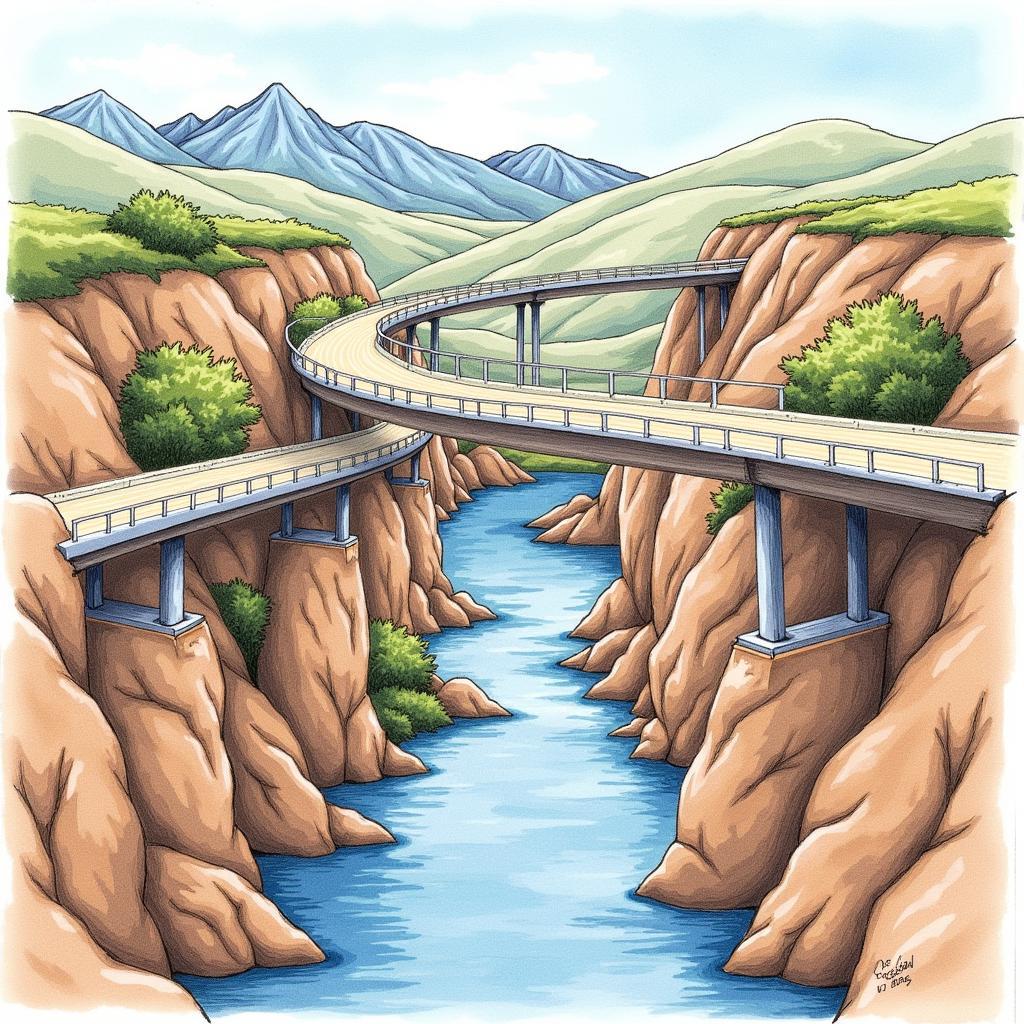 Example of an Art Therapy Bridge Drawing
Example of an Art Therapy Bridge Drawing
Benefits of Bridge Drawing Art Therapy
Bridge drawing offers a range of benefits for individuals seeking self-discovery and emotional healing. It can be particularly helpful for those who struggle with verbalizing their feelings.
- Emotional Expression: Provides a non-verbal outlet for emotions that may be difficult to express through words.
- Self-Awareness: Enhances self-understanding by bringing unconscious thoughts and feelings to the surface.
- Problem-Solving: Facilitates identifying challenges and exploring potential solutions through visual representation.
- Stress Reduction: Offers a creative and calming activity that can reduce stress and anxiety.
- Personal Growth: Supports personal development by encouraging reflection and insight into life patterns.
Dr. Emily Carter, a renowned art therapist, explains, “Bridge drawings provide a tangible representation of the client’s internal world. It’s a powerful tool for understanding their journey and facilitating healing.”
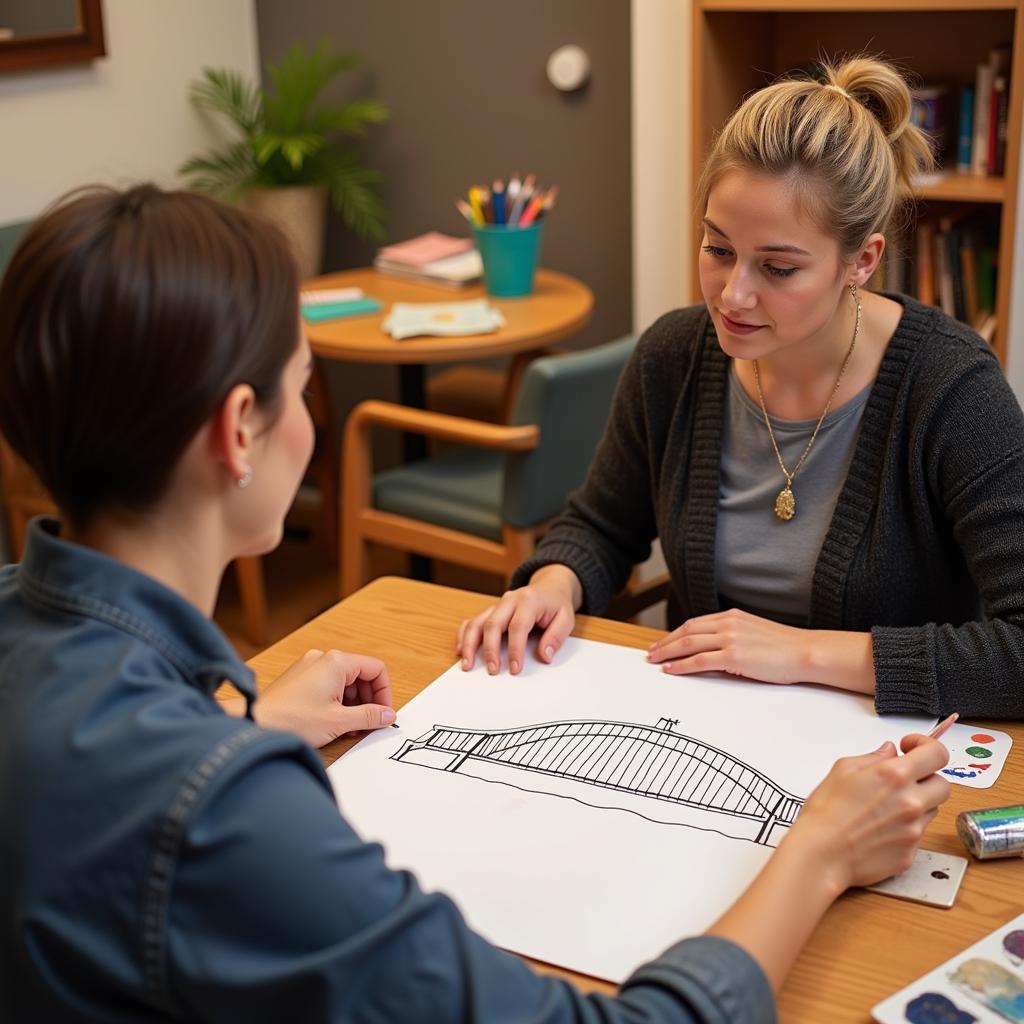 Art Therapy Session using Bridge Drawing
Art Therapy Session using Bridge Drawing
Exploring Different Perspectives: The Past, Present, and Future
The bridge metaphor encourages exploration of the past, present, and future. The starting point of the bridge represents the past, allowing individuals to reflect on significant experiences and how they have shaped their current selves. bridge drawing art therapy helps people connect with their past in a meaningful way. The bridge itself symbolizes the present, providing insights into current challenges, resources, and overall well-being. Finally, the destination represents the future, encouraging individuals to visualize their goals and aspirations.
How to Interpret Your Bridge Drawing
Interpreting a bridge drawing is a personal and subjective process. However, certain common themes often emerge. The condition of the bridge (e.g., sturdy, fragile, incomplete) can reflect the individual’s sense of stability and resilience. The presence of obstacles (e.g., gaps, rough terrain) may symbolize challenges or fears. Supports under the bridge can represent resources and relationships. The destination itself can reveal aspirations and hopes for the future.
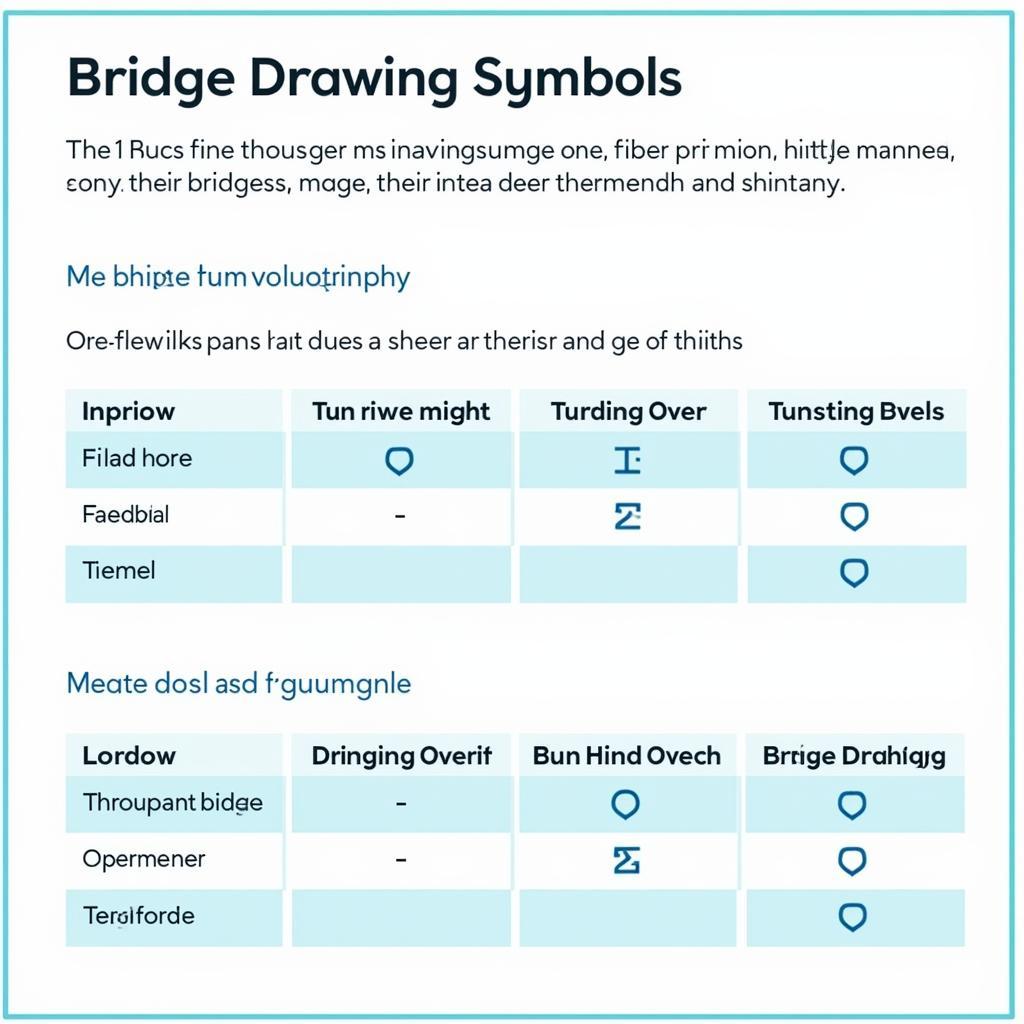 Interpreting Common Symbols in Bridge Drawings
Interpreting Common Symbols in Bridge Drawings
“The beauty of bridge drawing lies in its simplicity,” shares Dr. Michael Reed, a leading expert in expressive arts therapy. “It provides a framework for self-discovery that is both accessible and profound.”
Conclusion
Art therapy bridge drawing is a valuable tool for anyone seeking self-understanding and emotional growth. It offers a unique and creative way to explore life’s journey, navigate challenges, and connect with inner resources. By visually representing your path, you can gain valuable insights and empower yourself to build a stronger, more fulfilling future. bridge drawing art therapy is a powerful method for personal growth.
FAQ
- What materials do I need for bridge drawing?
- How long does a typical bridge drawing session last?
- Do I need any prior art experience?
- Is bridge drawing suitable for children?
- Can bridge drawing be used in group therapy?
- How can I find a qualified art therapist?
- What if I feel uncomfortable with drawing?
Common Scenarios and Questions:
-
Scenario: Feeling lost and unsure about the future.
- Question: How can bridge drawing help me clarify my goals?
-
Scenario: Experiencing grief or loss.
- Question: Can bridge drawing help me process my emotions?
Further Exploration:
- Explore other art therapy techniques.
- Learn more about the benefits of creative expression.
Contact Us:
For support, please contact us at Phone Number: 02462573573, Email: [email protected] Or visit us at: Savico Megamall, 7-9 Đ. Nguyễn Văn Linh, Gia Thụy, Long Biên, Hà Nội 10000, Việt Nam. We have a 24/7 customer support team.
